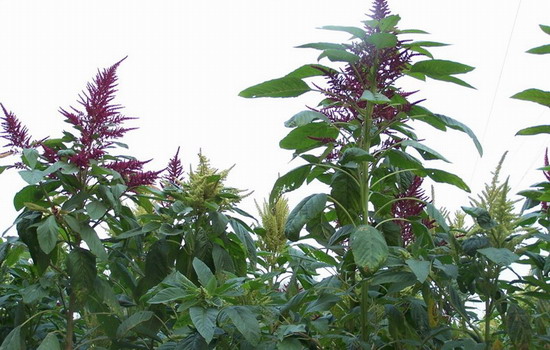South China Botanical Garden Finds the High-biomass Hyperaccumulator for Phytoremediation of Cd Contaminated Soil
Phytoremediation is known as a cost-effective, environmentally friendly in situ remediation technique, which strives to maintain soil fertility and structure. Early phytoremediation research focused on “hyperaccumulator” plants, but the application potential in phytoremediation is limited by the fact that many hyperaccumulators grow slowly and have a small biomass.
Dr. LI Ningyu, led by Prof. LI Zhian in research group of Soil Science and Ecological Engineering, South China Botanical Garden, CAS, conducted a study to assess the phytoextraction potential for Cd of three amaranth cultivars (Amaranthus hypochondriacus L. Cvs. K112, R104 and K472), and the effect of application of N, NP and NPK fertilizer on Cd uptake of the three cultivars from soil contaminated with 5 mg kg-1 Cd. The results show that three amaranth cultivars grew well, and accumulating Cd in their harvestable above-ground tissues ranging from 95.1 to 179 mg kg-1, with Bioconcentration Factors (BCF) of 17.7 - 29.7 and Transfer Factor (TF) of 1.0 -2.0. Application of N, NP or NPK fertilizers usually increased foliar Cd content but decreased Cd content in stem and root. However, such effects were small in most cases. Fertilizers containing only N or N and P combined did not markedly increase dry biomass of the three cultivars, leading to a limited increment of Cd accumulation. NPK fertilizer greatly increased dry biomass, by factors of 2.7-3.8, resulting in a large increment of Cd accumulation. These results indicate that A. hypochondriacus has a potential application for phytoextraction of Cd from contaminated soils. Most importantly, A. hypochondriacus has a relatively high biomass yield (an average dry biomass yield of 10 to 15 t hm-2) compared with other known hyperaccumulating plants such as T. caerulescens and A. halleri. And our study also shows that biomass is the most critical determinant of Cd accumulation.
This research was published on line in International Journal of Phytoremediation(DOI: 10.1080/15226514.2011.587479.

Amaranthus hypochondriacus L. Cvs. K112
File Download: